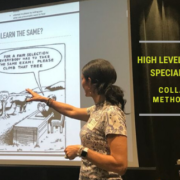Handwriting Day: Helpful Hints for Parents of Struggling Writers

Sloppy handwriting can be frustrating for students, parents, and teachers alike. The writing is difficult to read and appears to exhibit a lack of effort on behalf of the “scribe” or writer. Dysgraphia, however, is much more complex than just a careless or sloppy writer. Dysgraphia is a neurological disorder or learning disability in which the person’s written expression is affected or compromised. Dysgraphia is characterized by difficulties with putting thoughts to paper in both an expressive sense and a physical sense. This means that children with dysgraphia may struggle with the thought process behind written spelling and sentence-writing or with the fine motor skills required to physically compose words on paper.
Obviously, this learning disability can be greatly frustrating due to its negative impact on children as learners. No matter the class, a child is going to need to write clearly, correctly, and somewhat quickly. Signs that a struggling writer may have more going on than simple sloppiness are below. Of course, when identified and treated, children are better able to achieve academic success. With the help of psychologists for language-based dysgraphia, and the assistance of an occupational therapist for mechanical or motor skills difficulties, children are far more likely to succeed academically.
Signs to be aware of:
Is your child’s writing not only illegible, but inconsistent as well? If letters are “sloppy” but also varied in terms of size, shape, upper/lower case, cursive/print, etc., this may be an indication of dysgraphia.
Does your child ignore lines or margins on the paper? This is likely more than just a “rebel” move to disregard neatness. Children who regularly neglect the designated lines and margins are likely exhibiting an issue with spatial recognition—which accompanies the handwriting issues aligned with dysgraphia. Another observation to note is if your child begins writing in the middle or bottom of a clean sheet of paper. Again, failing to start at the top left of the paper could be a spatial recognition issue.
Does your child’s grip seem exceptionally strange or labored? This could mean anything from gripping way down on the pencil, almost touching the paper, to strained or slanted wrist positioning. These types of grips and hand positioning are not only uncomfortable, but they can also further discourage a young writer. If children do not correct their grip, muscle memory will become more challenging during occupational therapy. Children with dysgraphia may also slant or position their paper oddly while writing.
Is your child’s writing speed painfully slow? This could also be an indication of a larger issue. Because of the physical and expressive difficulty, children may write exceptionally slowly. The motor skills, combined with the difficulty with representing thoughts in written form, makes writing or copying a sentence extremely arduous. A child with dysgraphia may also lean very closely to the paper or watch the hand that is writing.





